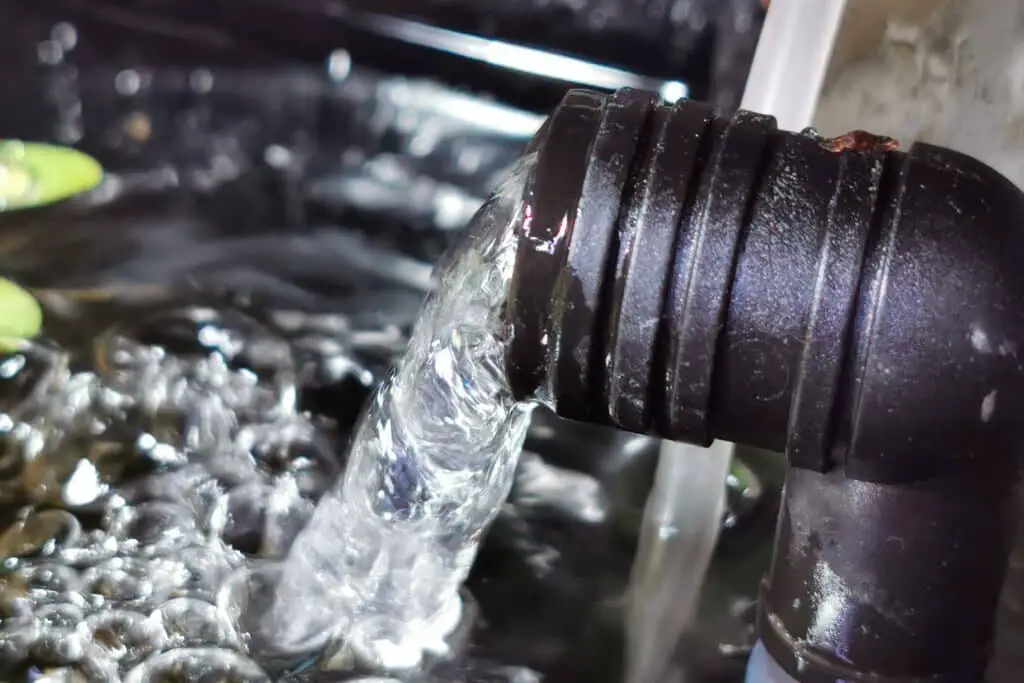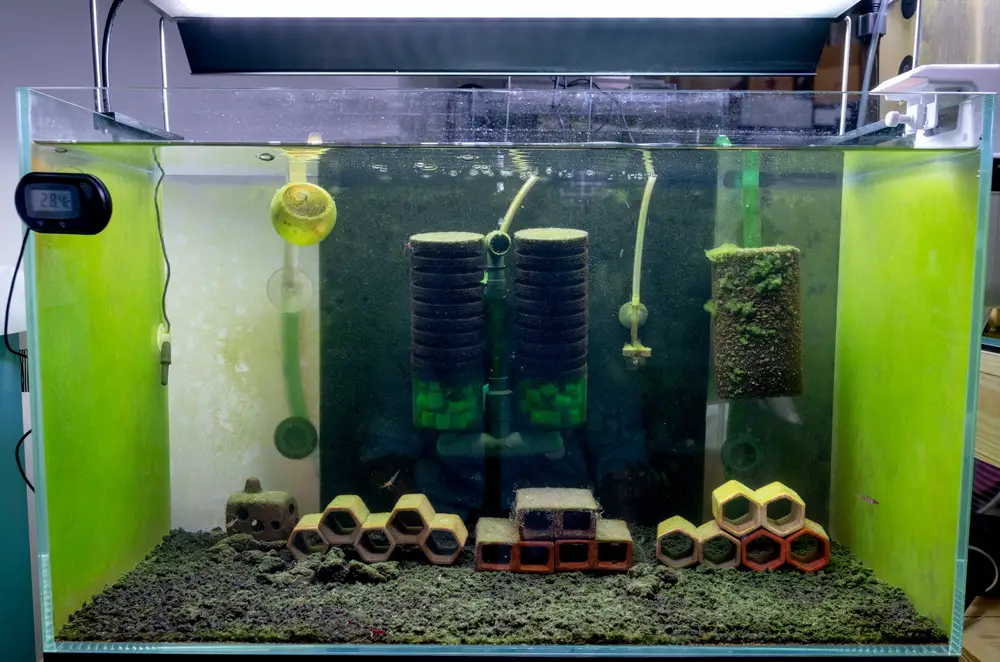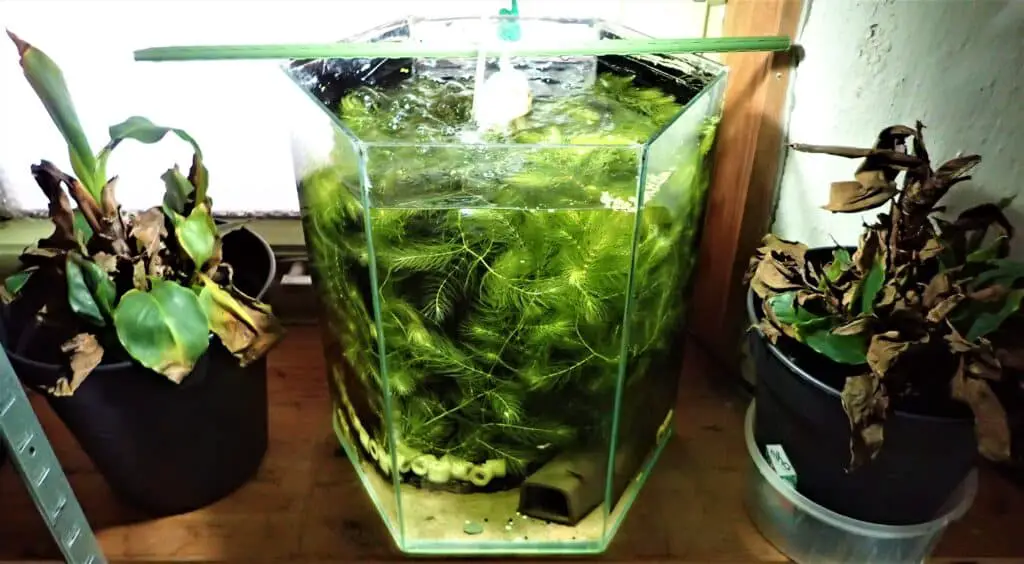Have you ever been kept awake at night by the incessant bubbling of your sponge filter ? You’re not alone. Many aquarists have grappled with the same issue, especially those who keep their tanks in their bedrooms.
? You’re not alone. Many aquarists have grappled with the same issue, especially those who keep their tanks in their bedrooms.
Picture this: It’s late at night, the room is quiet, and all you can hear is the constant blub-blub-blub of your sponge filter. It’s like a tiny, aquatic version of Chinese water torture. You love your shrimps, but you also love your sleep. So, what do you do?
You can make your sponge filter quieter. Simply adjust the air output or add a valve to your airline to limit air. An airstone can also help by creating smaller, quieter bubbles. Alternatively, try placing the outlet above the water. It might seem odd, but it works.
Hello there, fellow aquarists! I’m here to share my personal journey with shrimp keeping, a hobby that has brought me immense joy and a fair share of challenges over the past 40 years.
My love for these tiny, fascinating creatures began on a lazy Sunday afternoon when I stumbled upon a YouTube video of a thriving shrimp tank. The vibrant colors, the intricate social dynamics, and the sheer tranquility of the scene captivated me. I was hooked. I decided then and there to set up my own shrimp tank.
video of a thriving shrimp tank. The vibrant colors, the intricate social dynamics, and the sheer tranquility of the scene captivated me. I was hooked. I decided then and there to set up my own shrimp tank.
The initial stages were a breeze. I did my research, set up a tank, and introduced my first batch of cherry shrimps. They were a delight to watch, their tiny forms darting around the tank, exploring their new home. But as the weeks turned into months, I began to encounter challenges that tested my resolve.
One of the first issues I faced was the noise from the sponge filter. I had set up the tank in my bedroom, and the constant bubbling, while initially soothing, soon became a source of sleepless nights. The incessant blub-blub-blub was like a ticking clock, impossible to ignore once you’ve tuned into it.
I tried various methods to silence the filter. I adjusted the air output, added a valve to the airline, even experimented with an airstone. Each method had its pros and cons, and it took a fair bit of trial and error to find the right balance.
Over the years, I’ve learned that shrimp keeping, like any hobby, comes with its own set of challenges. But with patience, persistence, and a willingness to learn, these challenges can be overcome. And the reward – a thriving, vibrant shrimp tank – is well worth the effort.

What are the common causes of noise in a sponge filter?
Ah, the bubbling symphony of a sponge filter. It’s a sound that’s all too familiar to us aquarists. But what exactly causes this noise? Let’s dive into the mechanics of a sponge filter to understand better.
A sponge filter operates on a simple principle: air is pumped into a tube, which then rises and exits the tube, creating a vacuum that draws water through the sponge. This process is what filters the water, trapping debris in the sponge and providing a surface for beneficial bacteria to grow.
Two things primarily cause the noise you hear:
1. The Bubbles: As the air is pumped into the tube, it forms bubbles. When these bubbles rise and reach the surface of the water, they burst, creating the characteristic ‘blub-blub’ sound. The size and speed of the bubbles can affect the noise level. Larger, faster bubbles tend to be noisier when they burst.
2. The Air Pump: The air pump itself can also contribute to the noise. As it works to pump air into the tube, it can vibrate, creating a humming or buzzing sound. The intensity of this noise can depend on the quality of the pump and the surface it’s placed on.
So, in essence, the noise from a sponge filter is a byproduct of its operation. However, as we’ve seen, there are ways to mitigate this noise and achieve a quieter, more peaceful tank environment.

How does adjusting the air output help reduce the noise from a sponge filter?
Great question! Adjusting the air output is one of the simplest and most effective ways to reduce the noise from a sponge filter. But how does it work? Let’s take a closer look.
As we discussed earlier, the noise from a sponge filter primarily comes from the bubbles that are created when air is pumped into the filter. The size and speed of these bubbles can significantly impact the noise level. Larger, faster bubbles tend to create more noise when they burst at the surface of the water.
By adjusting the air output, you’re essentially controlling the size and speed of these bubbles. When you reduce the air output, you’re slowing down the rate at which air is pumped into the filter. This results in smaller, slower bubbles, generally quieter when bursting.
It’s a bit like turning down the volume on your stereo. The music is still playing, but at a more comfortable level for your ears.
However, it’s important to strike a balance when adjusting the air output. While reducing the output can make the filter quieter, it also reduces the filter’s effectiveness. The filter needs a certain amount of air to operate correctly and provide adequate filtration for your tank. So, while it’s tempting to turn the output down to a whisper, remember that your shrimps’ health and happiness come first!
Adjusting the air output is a bit of a balancing act. It’s about finding the sweet spot where your filter is quiet enough for your liking, but still effective enough to keep your tank clean and your shrimps happy.

 filters are best for shrimp tanks.
filters are best for shrimp tanks. What role does an airstone play in silencing a sponge filter?
Ah, the humble airstone, an often overlooked but handy tool in the aquarist’s arsenal. But how does it help in silencing a sponge filter? Let’s find out.
An airstone is a small, porous stone connected to an airline’s air pump. When air is pumped through the airstone, it is broken up into tiny bubbles. These bubbles are much smaller than the ones typically produced by a sponge filter.
Now, remember how we said that the noise from a sponge filter primarily comes from the bubbles bursting at the water’s surface? And that larger, faster bubbles tend to create more noise? Well, here’s where the airstone comes in.
By breaking up the air into tiny bubbles, the airstone effectively reduces the noise from the filter. These smaller bubbles are not only quieter when they burst, but they also create a more gentle, soothing sound. It’s like the difference between a clap of thunder and the gentle patter of rain.
In addition to reducing noise, an airstone also has other benefits. The tiny bubbles it produces increase the surface area of the air in contact with the water, which can improve gas exchange and oxygenation in the tank. This can be particularly beneficial in tanks with a high bioload, where oxygen levels can be a concern.
So, if you have a larger sponge filter and you can fit an airstone inside the uplift tube, do it; just keep in mind everything has a pro and a con and airstone cons are they eventually block.

Are there any other methods to reduce the noise from a sponge filter?
Absolutely! While adjusting the air output and using an airstone are two of the most common methods to reduce noise from a sponge filter, there are other strategies you can employ. Let’s explore a few:
1. Positioning the Filter Outlet Above the Water: This might seem counterintuitive, but it can actually help reduce noise. The bubbles will still come from the tube even though the exit is above water. The water is being forced out, which makes the filter quieter. However, keep in mind that by raising the uplift tube you will lose a little power.
2. Using a Quieter Air Pump: Sometimes, the air pump can be a significant noise source. In such cases, investing in a quieter air pump can make a big difference. Many models on the market are designed to operate quietly without compromising on performance.
3. Placing the Air Pump on a Soft Surface: The vibrations from the air pump can cause noise, especially if it’s placed on a hard surface. You can dampen these vibrations and reduce noise by placing the pump on a soft surface, like a towel or a piece of foam.
4. Using a Sponge Filter Designed for Quiet Operation: Some sponge filters are designed to operate more quietly than others. These filters often have features like a multi-layered lift tube, which breaks up the bubbles into smaller, quieter bubbles, and a noise-reducing air chamber.
5. Regular Maintenance: Regular maintenance can also help keep your sponge filter quiet. Over time, debris can build up in the filter, affecting its performance and potentially increasing noise. By cleaning the filter regularly (without killing the beneficial bacteria), you can ensure it operates as quietly as possible.
Remember, every setup is unique, and what works best for you might depend on various factors like the size of your tank, the type of shrimp you’re keeping, and your personal noise tolerance. It might take a bit of experimentation, but with patience, you can find a solution that keeps both you and your shrimps happy!
Conclusion & Call to Action
In a nutshell, silencing a sponge filter is a matter of understanding the noise source and then applying the right strategies to mitigate it. Whether it’s adjusting the air output, using an airstone, positioning the filter outlet above the water, investing in a quieter air pump, or simply performing regular maintenance, there are several ways to make your sponge filter quieter.
Ultimately, it’s about finding the right balance between maintaining a healthy, clean environment for your shrimps and creating a peaceful, quiet space for yourself. Remember, every tank is unique, and what works best for you might require a bit of experimentation and patience.
Finally, please don’t hesitate to reach out if you need any help or have any questions. If you can’t reach me here, check out the aquarium shrimp-keeping groups on Facebook. There’s a whole community of shrimp enthusiasts out there who are always willing to share their knowledge and experiences.
Happy Shrimp Keeping!
FAQ
Q. Does a sponge filter make noise? A. Yes, a sponge filter does make noise. The noise primarily comes from the bubbles that are created when air is pumped into the filter. When these bubbles rise and reach the water’s surface, they burst, creating the characteristic ‘blub-blub’ sound. The air pump itself can also contribute to the noise, creating a humming or buzzing sound as it works.
Q. Can I turn off sponge filter at night? A. It’s generally not recommended to turn off your sponge filter at night. The filter provides essential filtration and oxygenation for your tank, which your shrimps need to survive. Turning off the filter can disrupt these processes and potentially harm your shrimps. If the noise is an issue, consider methods to reduce it rather than turning off the filter.
Q. How do you fix a noisy aquarium filter? A. There are several ways to reduce the noise from an aquarium filter. These include adjusting the air output, using an airstone, positioning the filter outlet above the water, using a quieter air pump, and performing regular maintenance. Each method can help mitigate the noise and create a quieter tank environment.
Q. Why does my filter make so much noise? A. The noise from a filter is primarily caused by the bubbles that are created when air is pumped into the filter. Larger, faster bubbles tend to create more noise when they burst at the surface of the water. The air pump itself can also contribute to the noise, creating a humming or buzzing sound as it works.
Q. How can I make a sponge filter quieter? A. There are several ways to make a sponge filter quieter. These include adjusting the air output, using an airstone, positioning the filter outlet above the water, using a quieter air pump, and performing regular maintenance.
